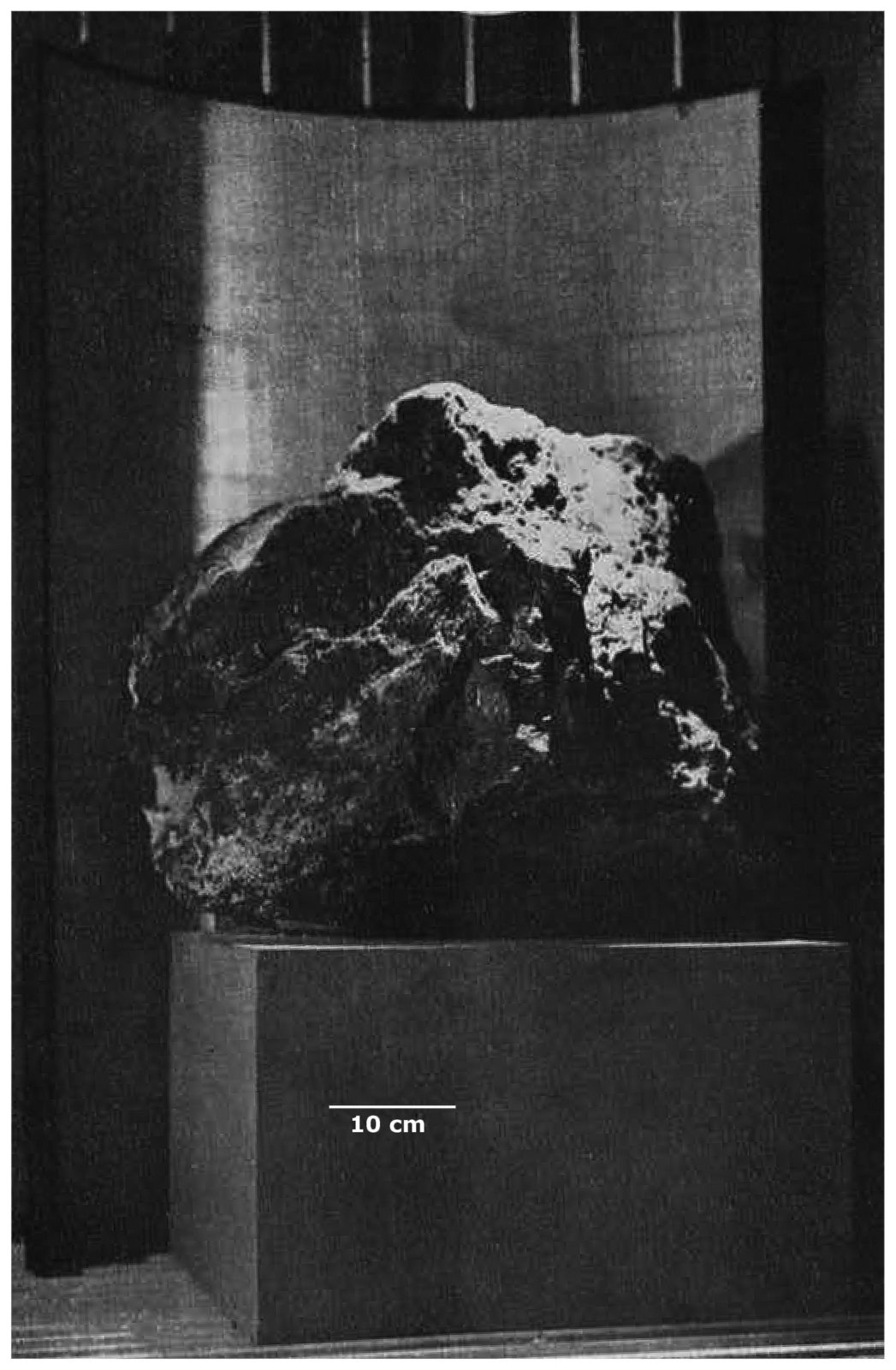Description: El Sherana Uraninite at the Australian Museum
Between 1961 and 1983 the Sydney based ‘Australian Museum’ proudly exhibited a huge specimen of El Sherana Uraninite. At the time it was the largest specimen of Uraninite ever recovered, and weighed approximately 850 kilograms. It measured 48 cm high and 46 cm wide. The specimen was recovered at El Sherana in May 1956. The potential radiation threat from this superbly wonderful and scientifically priceless specimen was thoroughly assessed by Health and Safety experts from the New South Wales Health Department. These experts stated and I quote “after measuring the amount of radiation from this big specimen, to obtain the maximum permissible dosage a member of the public would have to stand on the spot from where the specimen can be viewed for half an hour every day for the rest of his life. Therefore, the amount of radiation received by any member of the public from casual viewing is quite negligible.” – End of quote. As an additional precaution an exhaust fan was installed in the outside wall behind the specimen to remove the small amount of Radon emitted from the outer most surface (ca. 1-2 mm) of the specimen.
Sometime in the early 1980’s The Australian Museum gave the specimen to ANSTO for safe keeping at their Lucas Heights facility. According to ANSTO and its regulatory partner ARPANSA, the current location of the specimen is unknown.
Another similar, but smaller, specimen of Uraninite from El Sherana was displayed in the British Museum in London, but its current whereabouts is also unknown.
El Sherana Uraninite was dated at about 1800 Ma.
Before the El Sherana specimen was recovered, the previous weight record for a single specimen of Uraninite was held by the Shinkolobwe Mine in the Katanga Province of the Democratic Republic of the Congo. The Shinkolobwe specimen weighed 750 kilograms. (Original Photo courtesy of R. Chalmers)


All pictures, text, design © Forum FMF 2006-2025


